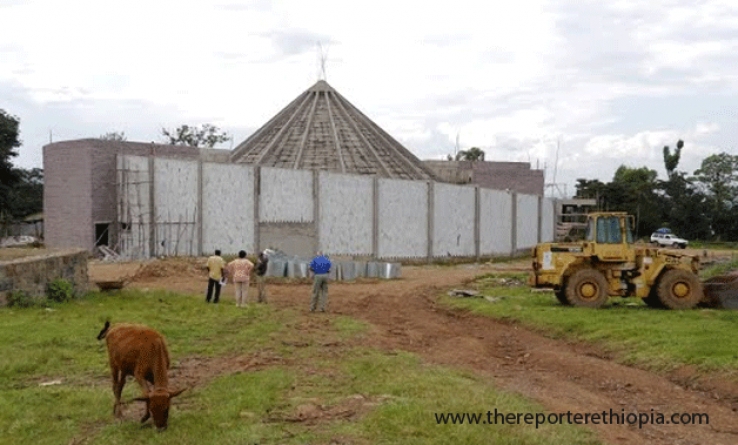
In the breathtaking experience of traveling across the remote highlands and lowlands of the south-western part of Ethiopia, one can, really, admire the country’s future in building a green economy.
The densely planted indigenous trees on both sides of the road seem to be the gate to a wonderful savanna land. A small town, Bonga, some 420 km south-west of Addis, provides a world-class center for research. The town hosts the first coffee museum of its kind, which many hope will unravel the mystery behind the birthplace of the mysterious green beans.
A goatherd named Kalid is linked with the story of coffee. Back then, Kalid saw his goats climbing the hills easily after eating what seemed to be a special leaf – a leaf that made them so spirited. His discovery encouraged him to be a guinea-pig to test the beans, which proved to be a source of great excitement. This is said to be the compelling story of the beans whose name reached out to every corner of the world.
Coffee has always been associated with Ethiopia’s longstanding tradition and hospitality. Indeed, it became a popular culture among many to grab coffee while discussing matters on the table. A few historians and anthropologists have also embarked on the task to find the birthplace of coffee.
The Kaffa people, located in the south-west of Ethiopia, have persisted with the strong argument that the name “coffee” is derived from their tribal name. They have kept their persuasive journey through historical and legendary accounts. They are, of course, known for their ancient history of self-governing dynasty that goes back thousands of years. They elected kings to ascend the throne, in which their dynasty structure is composed of defense, foreign affairs, justice and another four divisions that typify the modern government system. The last king of Kaffa, Akigo Shokru, was defeated in 1898 and arrested by the then powerful king, Menelik II, after a protracted conflict and several wars intended to include the region under a central administration. His crown is still kept in the Institute of Ethiopian Studies at Addis Ababa University.
In fact, coffee was found to be a treasure for the region some years ago when anthropologists dug out some of the materials that were supposed to have been used for drinking coffee. Moreover, the mother coffee tree in the so-called birthplace of coffee is still erected and preserved for tourists. Mankira, where a coffee bean was first discovered, has been a tourist attraction in the region. There is still a coffee forest in a wonderful natural setting which is placed to produce an organic wild forest honey that adds further fame for the area.
However, there is little to be said in favor of promoting the area or the entire nation as an original place of coffee due to several problems. Nevertheless, the man who is now becoming an icon for the area and has played a significant role in forwarding the idea of portraying the coffee bean as a trademark of the Ethiopian millennium, celebrated five years ago and also laid the foundation for the museum. Hassen Said (Ph.d.), from the Institute of Ethiopian Studies at Addis Ababa University, took the initiative to realize the construction of the museum when he found interesting and strong evidence about the association between coffee and the people of Kaffa.
The museum, which is on the verge of completion, rests on 2,800 sq.m. of land and hosted World Museum Day for the third time last May. “It has been quite an impressive journey to reach here,” he said. From the design of the complex to the construction cost, his insightful vision for the museum was the one guiding everything until it became a reality. “It is a simple love; a love that paid for my little involvement,” he said, describing its prominence among the people. Apart from a 10 million birr contribution from the wealthy businessman Sheik Mahamud Ali Alamoudin, the entire cost of the building was borne by the local people who have paid with the last cent from their pocket. “It feels like a blood-built heritage for the people,” he says.
The museum is expected to have rooms for laboratory purpose, research and documentation. Moreover, it will have a coffee park that brings all types of coffee beans from other parts of the country. “The most important role of the museum will be to promote the area as the original birthplace of coffee, in that we failed to do so thus far,” Kifle Hilemariam, chief administrator of the zone noted. In addition to this, it will also have a bigger impact in the promotion of other tourist sites found in the surrounding areas.
With the kind of personality in which Hassen has built, the realization of having a classy museum that promotes the area’s precious treasure to the rest of the world will indeed be an asset. The zone that comprises 30 percent of the country’s forest is on the verge of being registered as a world heritage site by the United Nations Education, Science and Culture Organization (UNESCO). “This will, of course, boost the country’s image,” Mamait Yilma, director of the national museum, argued.
Aseffa Hailemariam, who is in charge of the museum, notes that it is intended to promote coffee and will also accommodate a number of heritage pieces and artifacts of the people that have been preserved for centuries. “Quite soon the world will confirm Kaffa as a place where coffee was born,” he concluded. The people that realized the importance of environmental conservation a thousand years ago, and kept themselves in the forest planting coffee and hiving bees want to be recognized as “a coffee people”, and this seems be the time to reach out for that.
source: http://www.thereporterethiopia.com / The Reporter / Home> Living & the Arts / by Henok Reta / June 15th, 2013

